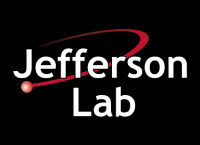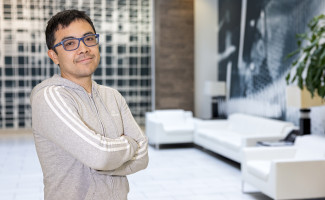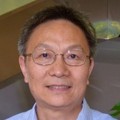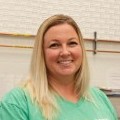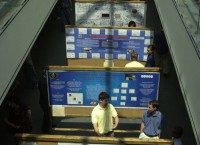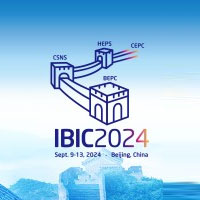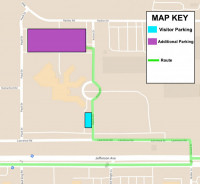Exploring the hidden world of quarks and gluons
Nobuo Sato has “crafted” a unique skillset to help him excel in his career. This DOE Early Career Award-winning nuclear physicist uses his skills as a computational scientist in the Center for Theoretical and Computational Physics at the U.S. Department of Energy’s Thomas Jefferson National Accelerator Facility to explore the femtoscale world of quarks and gluons.
“One of the primary missions of the lab is to explore the inner core of matter,” Sato explains. “This is an expedition—a trip to the center of protons and neutrons, which are fundamental objects that everything we see is made of.”
Inside protons and neutrons, the team explores some of the smallest-known particles – the quarks that make up protons and neutrons and the gluons that bind those quarks together -- to embark on a deeper understanding of how they behave.
“Nature has its own code,” Sato says. “It’s known as the ‘Standard Model’ and within it there is the theory of strong interactions that controls everything we see. We have Jefferson Lab as a facility to study the current frontier of science, which allows us to probe the realm of quarks and gluons.”
By performing scattering experiments under various conditions, Sato and his team are able to infer how quarks and gluons respond to various stimuli. Cataloging these observations enhances science’s understanding of the Standard Model as it pertains to quarks and gluons.
Then, with enough data, Sato can connect the theory of strong interactions to observational data. By investigating this connection, scientists can learn about the intrinsic properties of nucleons and nuclei in terms of its elementary constituents.
Protons, neutrons require orchestrated effort to probe and capture
Sato and his theorist colleagues have devised clever methods to analyze data recorded by experimentalists about the slippery protons and neutrons.
“Part of the difficulty is that all of the matter inside the protons and neutrons can’t exist in isolation,” Sato explains. “The interior has to stay whole—as a ‘bound state.’ You can’t pull a quark out and have it stay stable. Once it is pulled out of the bound state, it becomes an ‘independent,’ which can only exist in a very tiny fraction of time.”
“As soon as you poke a proton or neutron with a probe, such as an electron beam, it becomes something else,” Sato says. “It follows that different outcomes can occur due to quantum mechanics.”
Indeed, this probing method is central to many of the lab’s experiments and requires concerted maneuvering to succeed.
“There is an entire industry around how we can probe protons, and everyone at the lab has a role,” says Sato. “The accelerator teams are doing an excellent job producing energetic electron beams, and the experimentalists collect data from scattering events.
“Then there’s an entire system for acquiring data, including experimentalists, who will work around-the-clock in shifts to get all the data needed. Those data are converted into maps that theorists like me can reverse-engineer into a visual depiction of quarks and gluons. It is very complicated stuff -- let’s say that,” Sato laughs.
While "the whole lab orchestrates and synchronizes to play together,” Sato notes that, “Theory comes first.
"An experiment starts with a theory,” he explains. “From there, we have a framework that allows us to make calculations. Combining those calculations with computer science, we can reverse-engineer the hidden world of quarks and gluons into observational data. We are mapping data to help visualize and observe the inner core of matter.”
Essential Tools: High-powered Microscopes
While an experiment may begin with a theory, assembling a toolkit is a critical early step.
“A proton is ten-to-the-minus-15 meters in size,” says Sato. “Quarks and gluons are even smaller than a proton. We can’t see them directly, because our eyes will be blind to them.”
In order to observe the smallest-known particles, “you have to have a particle accelerator, which is essentially a probe inward like a microscope,” explains Sato.
That is where Jefferson Lab’s Continuous Electron Beam Accelerator Facility comes in. CEBAF is a DOE Office of Science user facility that enables the research of more than 1,900 nuclear physicists worldwide.
“One of our goals is to try to take pictures of the protons,” Sato says. “Just two decades ago, the field mostly relied on a one-dimensional picture. With the theoretical framework we now have, we are in a position to start to understand the full dimensionality of this realm.”
However, Sato notes, the “picture” he creates is not actually a picture, but rather a reconstruction made from observing behaviors and cataloging patterns in order to develop a projection of the characteristics of the subject.
In short, the subject Sato is trying to capture can only be “seen” by capturing its shadow from different angles and reconstructing the image with as much data as possible.
“We observe the reactions happening around the quarks and gluons in order to reverse-engineer an image—kind of like how we imagine the black hole,” Sato explains. “You can’t see a black hole directly, either, so to visualize it, you have to take a lot of data and try to reverse-engineer what a picture of the activity would really look like if we could see it.”
Support and mentoring for the big picture
Just as improving technology can further push the scientific frontier, Sato recognizes that supporting and mentoring other scientists can have an important impact on results—and he is eager for opportunities to engage.
“As part of the theory group, we give support to our experimental colleagues,” explains Sato. “Supporting physics is sharing theory. As a theoretical physicist, I work with experimentalists to design their experiments in ways that will help us optimize our time using the accelerator, so that we can get the quality of data we need to most accurately reconstruct the image we want.”
Sato also looks forward to mentoring—and learning from—a regular flow of postdoctoral students and interns.
“Part of mentoring younger scientists is to showcase the relationship between the theory realm and experimental realm,” Sato says.
“Our summer interns are undergraduate students who are interested in theoretical physics,” Sato explains. “We assign projects so we can train them and pave their way to work in this field. The skills they gain are big.
“I have a small bandwidth and having a group of people who works together helps us all,” he continues. “Students learn more about theory and a lot about computing and machine learning. They have hands-on computational activities with real science that can be applied.”
Sato’s goal when mentoring others is simple: “I want to give the opportunity to everyone who is interested in this field of study and to learn about the wonders of this microscopic hidden world of quarks and gluons.”
Outside of the lab, Sato says that he enjoys running.
“Running is one of my favorite outdoor activities,” Sato says. “I don’t like to compete. Running is a time when I can think about solutions to problems I’m working on. Some problems I solve when running. There’s an interesting dynamic between the two.”
Further Reading
Analyzing Matter’s Building Blocks
Theorist Takes Aim at the Makeup of Matter
Computing Takes the Prize
By Carrie Rogers


